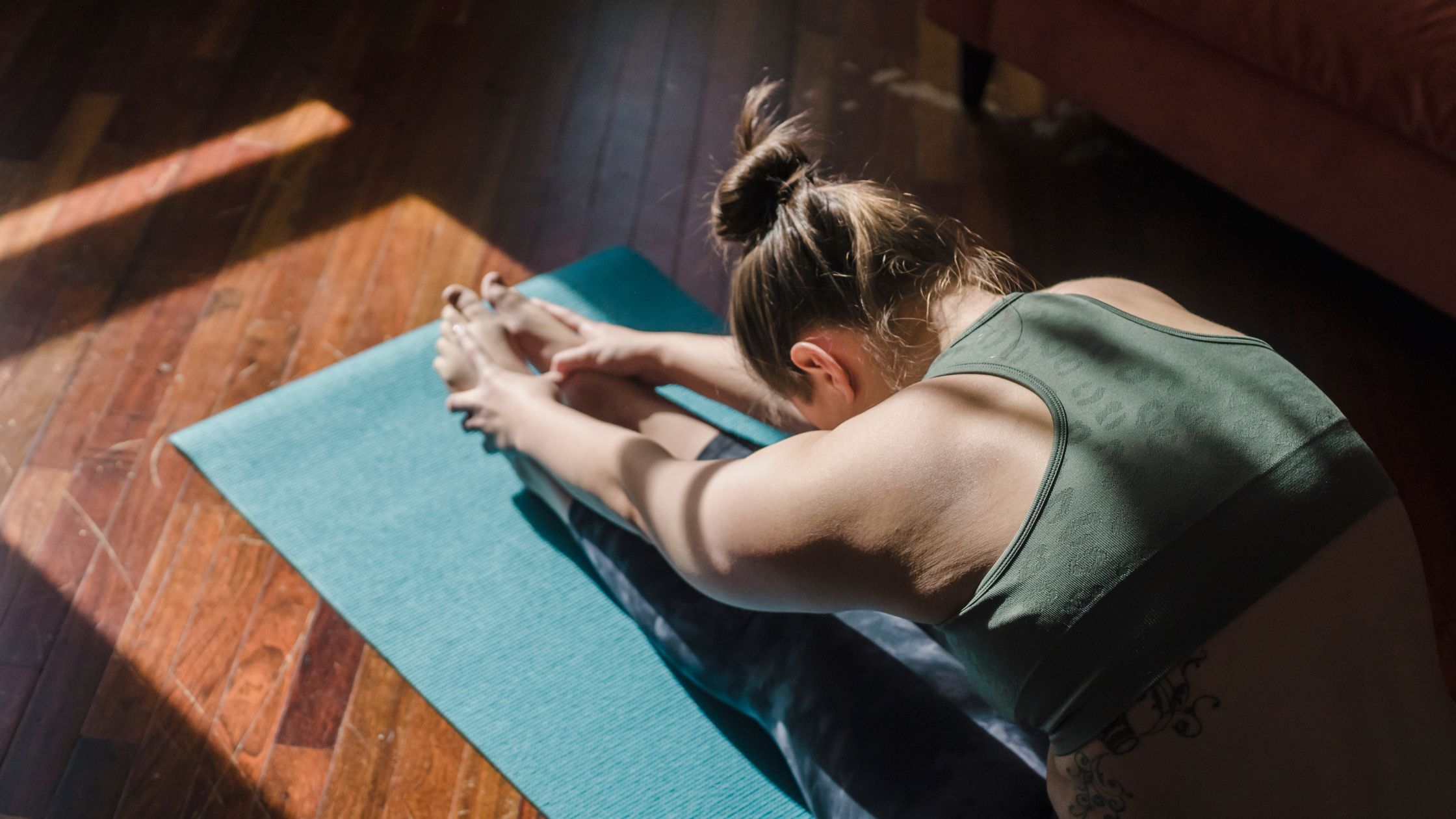Can Sitting on the Floor Improve Your Flexibility?

Key Takeaways
Can floor sitting help improve flexibility?
Yes. Floor sitting naturally stretches the hips, hamstrings, and lower back while activating stabilizing muscles. Regular practice improves mobility, posture, and joint health.
Flexibility is a vital component of overall fitness and mobility, influencing everything from daily movement to long-term joint health. While stretching routines and yoga classes are well-known ways to improve flexibility, a simple practice—floor sitting—is gaining attention as a natural way to enhance mobility and ease muscle tension. This blog explores whether this habit can truly make a difference.
The Science Behind Floor Sitting and Flexibility
The modern lifestyle, dominated by chairs and couches, often limits our range of motion. Over time, this can lead to stiff joints, shortened muscles, and poor posture. Can floor sitting help with flexibility? Experts suggest that regularly sitting on the floor encourages deeper hip opening, strengthens stabilizing muscles, and restores natural movement patterns. Unlike chairs, floor sitting requires you to use your core and legs to get up and down, which activates muscles often underused.
When you sit on the floor, your body adopts positions like cross-legged, kneeling, or squatting. These postures naturally encourage seated stretches that improve flexibility in the hips, hamstrings, and lower back. Over time, this habit promotes better joint health and reduces the risk of stiffness associated with aging.
Benefits of Floor Postures for Your Body
1. Enhanced Hip Opening
Many floor postures—such as sitting cross-legged or in a butterfly position—gently stretch and open the hip flexors. Hip opening is essential for reducing lower back pain and increasing mobility, especially for those who sit at desks all day.
2. Improved Hamstring Flexibility
Certain floor positions, like sitting with legs extended, encourage a natural hamstring stretch. This is particularly beneficial if you experience tightness in the back of your legs from prolonged sitting in chairs.
3. Boosted Mobility and Balance
Getting down to and rising from the floor requires strength and balance, engaging muscles in the legs, core, and back. This movement enhances overall mobility and stability, which are crucial for maintaining independence as you age.
4. Relief from Muscle Tension
Regular floor sitting encourages relaxation and helps release muscle tension in the hips, glutes, and lower back. Incorporating this practice into your routine can alleviate tightness caused by sedentary habits.
5. Support for Healthy Joints
Because floor postures encourage a wider range of motion, they contribute to healthy joints by keeping them lubricated and strong. The frequent shifting between different seated stretches also reduces stiffness.
Incorporating Floor Yoga into Your Routine
One of the easiest ways to benefit from floor sitting is through floor yoga. Poses such as Child’s Pose, Pigeon Pose, and Seated Forward Bend combine stretching habits with mindful breathing to enhance flexibility. These gentle movements not only increase range of motion but also promote relaxation.
Suggested Floor Yoga Poses:
- Seated Forward Bend: Deep hamstring stretch and lower back release.
- Butterfly Pose: Excellent for hip opening and inner thigh flexibility.
- Pigeon Pose: Targets hip flexors, glutes, and improves mobility.
- Child’s Pose: Releases tension in the back and hips while calming the mind.
How to Develop Healthy Stretching Habits Through Floor Sitting
To maximize the benefits of floor sitting, consistency is key. Start by spending 10-15 minutes on the floor daily, alternating between different floor postures. Gradually increase the time as your body adapts. Pair this with intentional stretching habits such as:
- Transitioning between positions (cross-legged to kneeling)
- Adding gentle twists for spine flexibility
- Incorporating breathing exercises to release muscle tension
Tips for Beginners:
- Use a yoga mat or cushion for comfort.
- Keep your back straight to avoid slouching.
- Listen to your body and avoid forcing stretches.
Can Floor Sitting Help with Flexibility? The Verdict
The answer is a resounding yes. Floor sitting can help with flexibility by naturally promoting a wide range of motion, stretching key muscle groups, and supporting joint health. While it may feel uncomfortable at first, regular practice can gradually loosen tight muscles and improve posture.
When combined with other activities like yoga and regular exercise, floor sitting becomes a powerful tool for maintaining healthy joints and enhancing mobility throughout life. This simple habit requires no special equipment; just a willingness to get closer to the ground.
Final Thoughts
In a world where chairs dominate our daily routines, rediscovering the practice of sitting on the floor offers both physical and mental benefits. By incorporating seated stretches, floor yoga, and mindful movement, you can unlock greater flexibility, reduce muscle tension, and promote long-term joint health.
FAQ
Does sitting on the floor improve flexibility?
Yes! Regular floor sitting stretches the hips, hamstrings, and lower back, promoting better mobility and reducing stiffness.
How long should I sit on the floor to see benefits?
Start with 10–15 minutes daily, gradually increasing as your body adapts to the new positions.
Is floor sitting safe for everyone?
Most people can benefit, but if you have knee, hip, or back issues, consult a doctor before starting.
What are the best floor positions for flexibility?
Cross-legged, butterfly, and seated forward bend positions are excellent for opening hips and stretching hamstrings.
Can floor yoga enhance the benefits of floor sitting?
Absolutely! Incorporating poses like Child’s Pose and Pigeon Pose deepens stretches and supports joint health.
